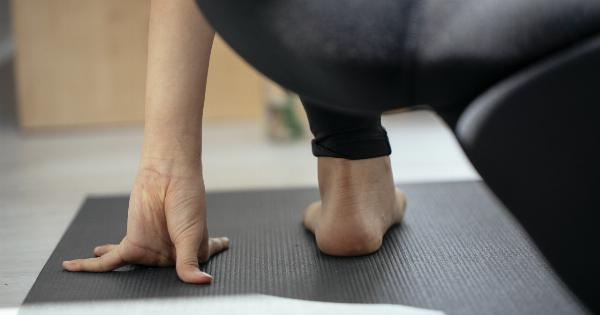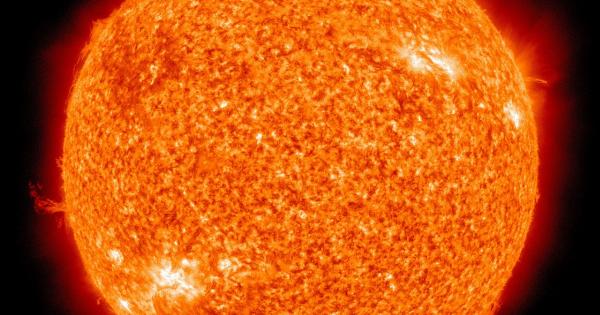Headaches are a common ailment that afflicts individuals of all ages and backgrounds. While there are various causes for headaches, one factor that often goes unnoticed is the impact of the sun.
Many people experience a burning headache when exposed to direct sunlight or spend prolonged periods of time outdoors. In this article, we will explore the relationship between the sun and headaches, its underlying causes, and discuss effective treatment options.
The Link Between Sunlight and Headaches
It is important to note that not all individuals experience headaches due to sun exposure. However, for those who do, it is crucial to understand the underlying mechanisms.
Sunlight, particularly ultraviolet (UV) rays, can trigger headaches in sensitive individuals. The exact reason behind this phenomenon is not yet fully understood, but several theories have been proposed.
The Role of Sun-Induced Migraines
A specific type of headache that is strongly linked to sunlight exposure is known as a sun-induced migraine.
Migraines, characterized by severe throbbing pain, sensitivity to light and sound, and sometimes nausea, can be triggered by various factors, including bright light. For individuals prone to migraines, exposure to direct sunlight can be a significant trigger.
Photophobia: A Key Factor
The term photophobia refers to sensitivity or intolerance to light. Many people experience this symptom during headaches, particularly migraines. When sunlight or bright light enters the eyes, it can cause discomfort and exacerbate headache symptoms.
The eyes are highly sensitive to intense light, and this sensitivity can extend to the brain, thereby intensifying headache pain.
Sun-Related Dehydration
Prolonged exposure to the sun without adequate hydration can lead to dehydration. Dehydration is a known trigger for headaches in many individuals.
When the body lacks sufficient fluids, it can result in reduced blood volume, affecting blood flow to the brain. This alteration in blood circulation can contribute to the onset or worsening of headaches.
Preventing Sun-Induced Headaches
While it may not be possible to completely avoid sunlight, there are several strategies that can help prevent sun-induced headaches:.
1. Wear Sunglasses
Wearing sunglasses that provide adequate protection against UV rays can significantly reduce the risk of developing headaches triggered by sunlight. Opt for sunglasses with a high UV protection rating, preferably blocking 100% of both UVA and UVB rays.
2. Seek Shade
If you know that direct sunlight often triggers your headaches, try to seek shade whenever possible. Staying in shaded areas or using umbrellas can help minimize sun exposure and reduce the risk of a headache.
3. Stay Hydrated
Dehydration can worsen headache symptoms. It is crucial to drink plenty of fluids, especially when spending time outdoors in the sun. Carry a water bottle with you and aim to consume an adequate amount of water throughout the day.
4. Consider a Wide-Brimmed Hat
Wearing a wide-brimmed hat can provide additional shade and protect your face and eyes from direct sunlight. This can be particularly helpful during peak sun hours when the intensity of UV rays is higher.
5. Limit Sun Exposure
Limiting your time in the sun, especially during peak hours when the sun’s rays are the strongest, can significantly reduce the risk of developing sun-induced headaches.
Plan outdoor activities early in the morning or later in the afternoon to minimize exposure.
Treating Sun-Induced Headaches
If you find yourself experiencing a burning headache after sun exposure, there are several ways to alleviate the pain:.
1. Rest in a Dark Room
Find a quiet and dark room to rest in. Closing your eyes and minimizing exposure to light can help reduce the intensity of the headache.
2. Apply a Cold Compress
Placing a cold compress, such as an ice pack or a wet towel, on your forehead or the back of your neck can have a soothing effect and provide relief from the burning sensation.
3. Use Pain Medication
Over-the-counter pain medications such as ibuprofen or acetaminophen can help alleviate headache pain. However, it is important to follow the recommended dosage and consult a healthcare professional if headaches persist or worsen.
4. Hydrate
Drink plenty of fluids to rehydrate your body. Replenishing lost fluids can help relieve dehydration-induced headaches.
5. Try Relaxation Techniques
Engaging in relaxation techniques, such as deep breathing exercises, meditation, or yoga, can help reduce stress and alleviate headache symptoms.
Conclusion
While headaches triggered by sun exposure can be a nuisance, understanding the underlying causes and implementing preventive measures can help manage and reduce their occurrence.
By wearing sunglasses, seeking shade, staying hydrated, and taking necessary precautions, individuals can protect themselves from the sun’s impact on headaches. In case of a sun-induced headache, rest, applying cold compresses, using pain medication, hydrating, and practicing relaxation techniques can provide much-needed relief.
Remember, it is always advisable to consult a healthcare professional for personalized advice and guidance.





























